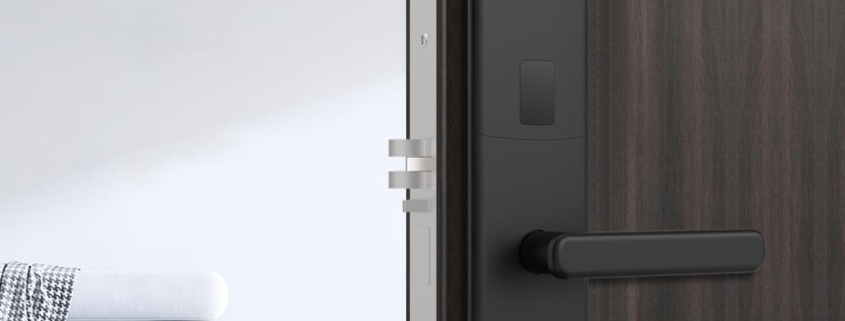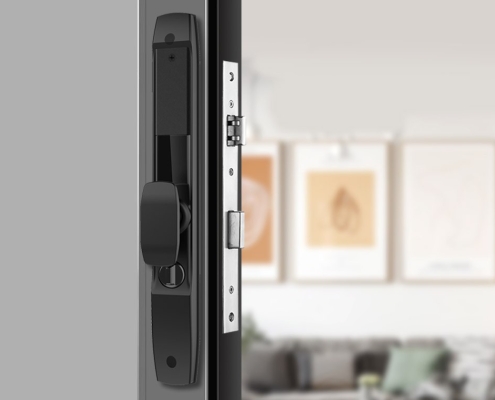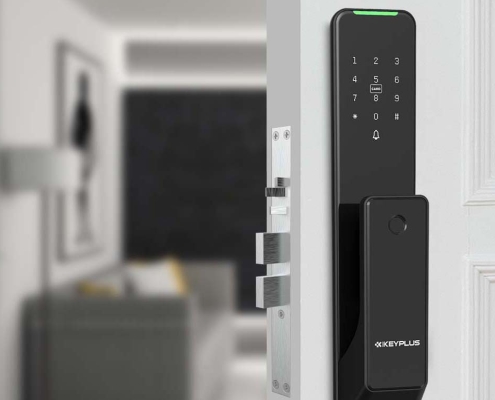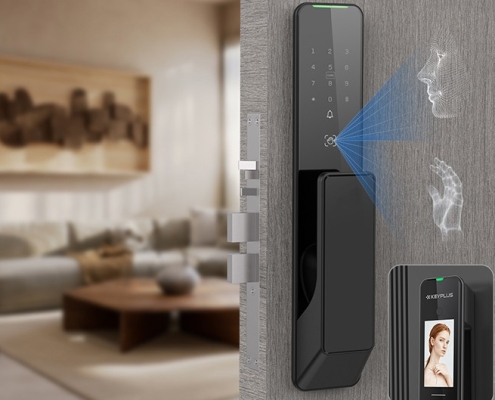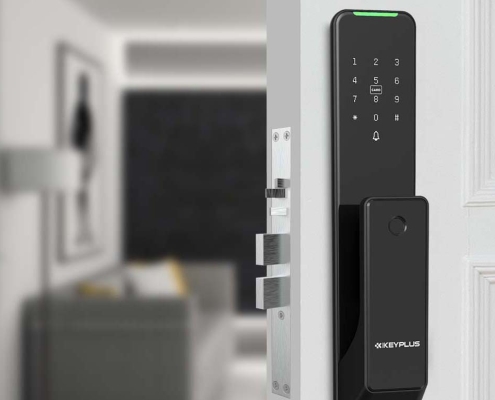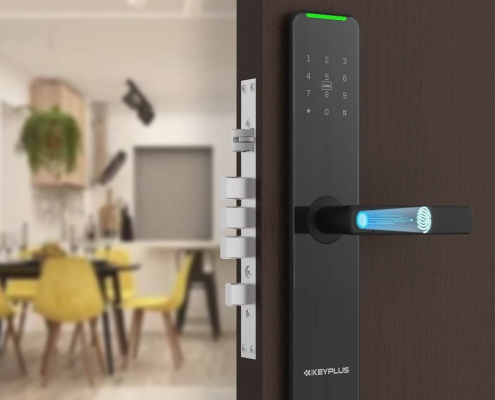How Do Wi-Fi Smart Locks Work?
In today’s connected world, smart home technology is revolutionizing how we secure our homes. Among the most popular innovations are Wi-Fi smart locks, which offer convenience, enhanced security, and remote access control. But how exactly do these devices work?
This guide breaks down the technology behind Wi-Fi smart locks, how they integrate with your home network, and why they’re becoming a must-have for American homeowners.
1. What Is a Wi-Fi Smart Lock?
A Wi-Fi smart lock is an electronic door lock that connects to your home’s Wi-Fi network, allowing you to lock and unlock your door remotely using a smartphone app, voice commands, or even automated routines. Unlike traditional locks that require physical keys, smart locks provide keyless entry through:
-
Smartphone control (via an app)
-
Voice assistants (like Amazon Alexa, Google Assistant, or Apple HomeKit)
-
PIN codes (for temporary guest access)
-
Fingerprint or facial recognition (in advanced models)
Because they connect directly to Wi-Fi (instead of relying on Bluetooth or a separate hub), these locks offer real-time updates and remote access from anywhere with an internet connection.
2. How Wi-Fi Smart Locks Work: The Technology Explained
Wi-Fi smart locks combine hardware mechanics, wireless connectivity, and encryption to provide secure, convenient access. Here’s a step-by-step breakdown:
A. The Lock Mechanism
At their core, smart locks still use a traditional deadbolt or latch system, but instead of a physical key, they rely on:
-
Electric motors that turn the bolt when triggered
-
Circuit boards that process digital commands
-
Secure wireless receivers (Wi-Fi, Bluetooth, or Zigbee in some models)
B. Wi-Fi Connectivity & Remote Access
Unlike Bluetooth-only smart locks (which require you to be nearby), Wi-Fi-enabled locks connect directly to your home network. This allows:
-
Remote locking/unlocking from anywhere via an app
-
Real-time notifications (e.g., “Your front door was unlocked at 3 PM”)
-
Integration with smart home systems (like Alexa, Google Home, or Apple Home)
Since Wi-Fi consumes more power than Bluetooth, most models use low-power modes or rechargeable batteries to extend battery life.
C. Mobile App Control
Every Wi-Fi smart lock comes with a companion app that lets you:
-
Lock/unlock the door remotely
-
Create and manage temporary access codes (for guests or service workers)
-
Check the lock status (whether it’s locked or unlocked)
-
Review an access log (who entered and when)
D. Voice & Automation Integration
Many Wi-Fi smart locks work with:
-
Amazon Alexa (“Alexa, lock the front door.”)
-
Google Assistant (“Hey Google, is the back door locked?”)
-
Apple HomeKit (for iPhone users)
-
Smart home routines (e.g., “Lock all doors at 10 PM automatically”)
E. Security & Encryption
A major concern with smart locks is hacking. Reputable brands use:
-
End-to-end encryption (like bank-level security)
-
Two-factor authentication (2FA) for app access
-
Auto-lock features to prevent accidental unlocks
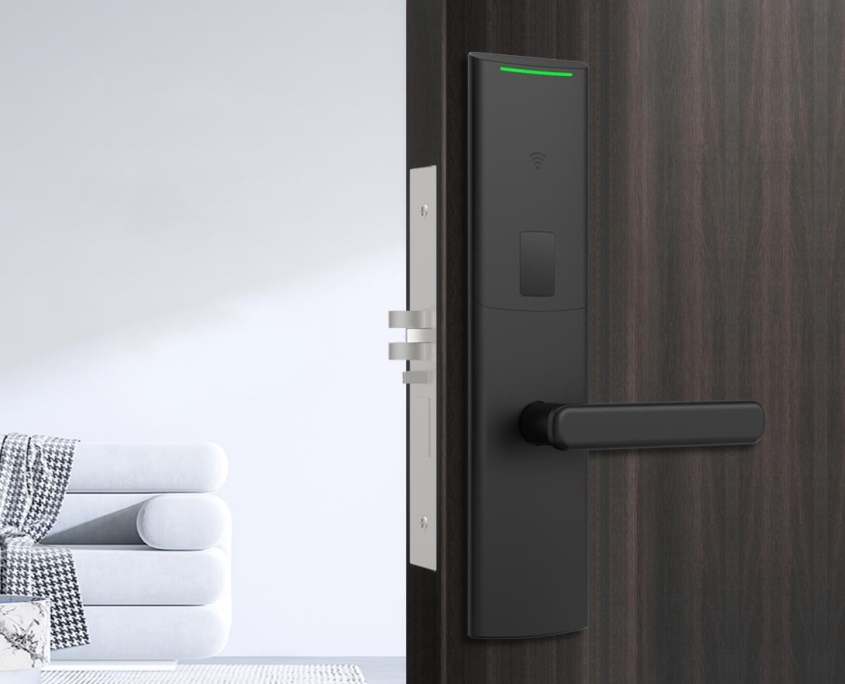
3. Benefits of Wi-Fi Smart Locks for American Homes
Why are so many Americans switching to Wi-Fi smart locks? Here are the top advantages:
No More Lost Keys
Forget fumbling for keys—just use your phone, a PIN, or your voice to unlock the door.
Grant Temporary Access
Need to let in a dog walker, cleaner, or Airbnb guest? Send them a one-time code that expires after use.
Monitor Your Door from Anywhere
Going on vacation? Check your app to ensure your door is locked.
Smart Home Compatibility
Works with Ring, Nest, Alexa, and more for a fully automated home.
Increased Security
Receive instant alerts if someone tampers with the lock or enters without permission.
4. Potential Drawbacks & Considerations
While Wi-Fi smart locks are convenient, they have a few limitations:
-
Wi-Fi dependency: If your internet goes down, some features may stop working (though most still allow manual key or PIN entry).
-
Battery life: Wi-Fi drains batteries faster than Bluetooth, so expect to replace them every 3-6 months (or use rechargeable options).
-
Installation complexity: Some locks require professional installation, especially if replacing an existing deadbolt.
5. Final Thoughts: Are Wi-Fi Smart Locks Worth It?
For American homeowners looking for convenience, security, and smart home integration, Wi-Fi smart locks are an excellent investment. They eliminate the need for physical keys, allow remote access, and integrate seamlessly with other smart devices.
Before buying, consider:
Compatibility with your existing smart home setup
Battery life and power options
Installation ease (DIY vs. professional)
With the right model, you can enjoy keyless, worry-free home access—whether you’re at work, on vacation, or just relaxing on the couch.
Would You Install a Wi-Fi Smart Lock?
If you’re in the U.S., chances are your neighbors already have one. Are you ready to upgrade your home security? Let us know in the comments!

